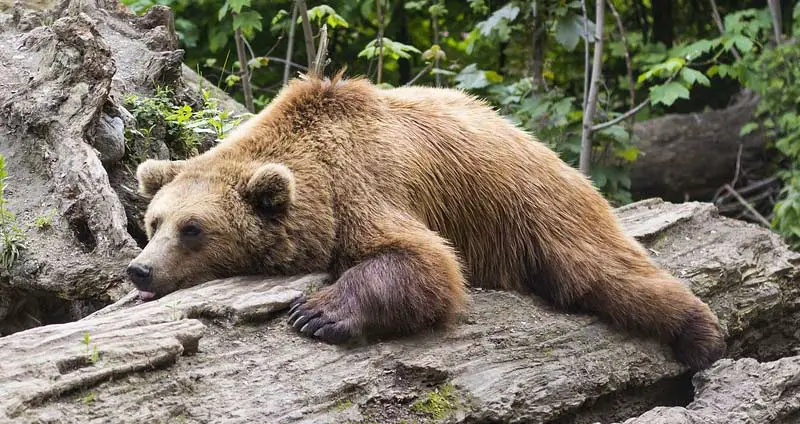Bears are easily some of the most untouchable, dominant creatures in the wild. They’re the definition of an apex predator — having a lot of prey while having virtually no predators.
Very few people have seen a bear in person, and even fewer people have seen a bear get into a fight that doesn’t end up going its way. So, what exactly is the deal?
Do bears have any predators? Are there any animals that eat bears? Or, are bears entirely uncontested in nature and don’t have the fear of being eaten.
Table of Contents
What Eats Bears?
As bears are massive, threatening apex predators, no animals actively hunt them for food besides humans. Predators of bears that pose a threat, though, include tigers, wolves, ungulates, scavengers, and other bears.
If any of these animals are seen eating a bear, it’s likely because the bear was already dead. However, these animals can defend themselves from bear attacks and may fatally wound a bear.
Additionally, since adult bears are so large, cubs are a much more common target.
Let’s take a closer look at the main predators of bears.
1. Humans

Humans are easily the most prominent predators of bears. Throughout the years, humans have drastically reduced the populations of virtually all types of bears.
Bear hunting is done for several reasons. Humans hunt bears for sport, for their pelts, for their organs, and as food. Eating bear meat is surprisingly common around the world.
In recent years, with the development of extremely accessible and effective weapons, bear hunting has become easier.
Fortunately, conservation efforts are put in place to help preserve these magnificent creatures, and it’s quite successful in some cases.
2. Tigers
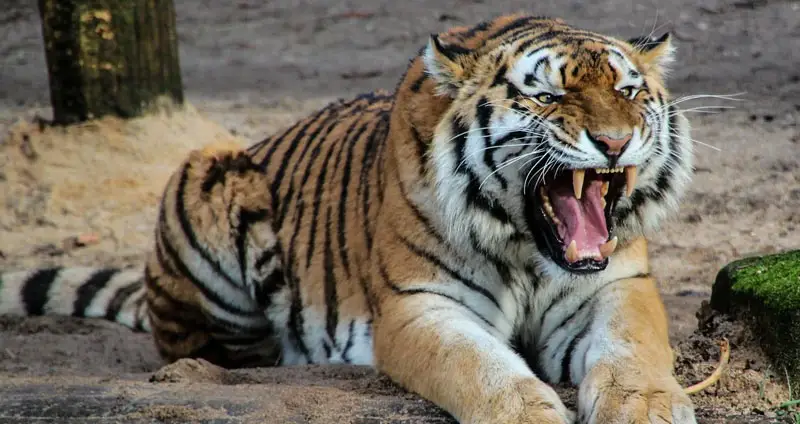
Tigers are perhaps one of the only natural predators of bears. Out of all of the animals in the animal kingdom, tigers are the most evenly-matched with bears in terms of strength and hunting abilities.
In fact, they may be too well-matched. Due to the fact that a fight between a tiger and a bear would be disastrous for both regardless of the winner, fights are typically avoided.
However, in areas where tigers are significantly larger than bears, a tiger hunting a bear isn’t unheard of — especially cubs.
If a tiger were to take down a bear, there’s no question that it would eat the bear. Such a kill would provide food for many days.
3. Wolves
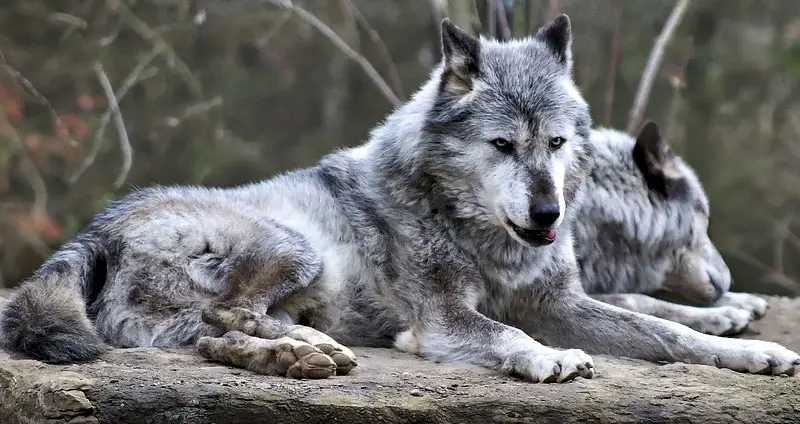
While it’s debated whether or not wolves actively hunt down bears and eat them, bear fur has been found in wolf scat on several occasions.
It’s also not a far-fetched idea to assume that wolves eat bears. While bears are massive in size and strength, wolves tend to hunt in packs with an average size of six.
While a pack of six wolves versus a large bear, like a grizzly bear, would still be a very close fight, it’s not unlikely that wolves could hunt a bear and eat it.
If a wolf were to eat a bear, though, it would likely be a cub. By surrounding the adult, they could create a diversion and snatch up a young cub.
For the most part, though, wolves target animals that can’t fight back as easily.
4. Moose/Bison/Ox
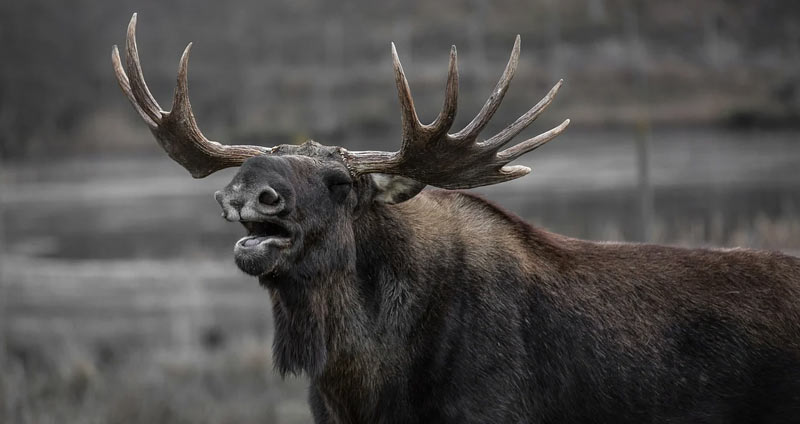
Various ungulates can pose a threat to bears, but they’re not active hunters of this apex predator. They may be just as large, but they lack the powerful claws and teeth that bears have.
If a moose or a bison were to kill a bear, it would be in an act of self-defense. They’re capable of doing significant damage with their horns/antlers that may kill a bear.
Bears do hunt down smaller moose/bison, so a skirmish could absolute occur.
5. Scavengers
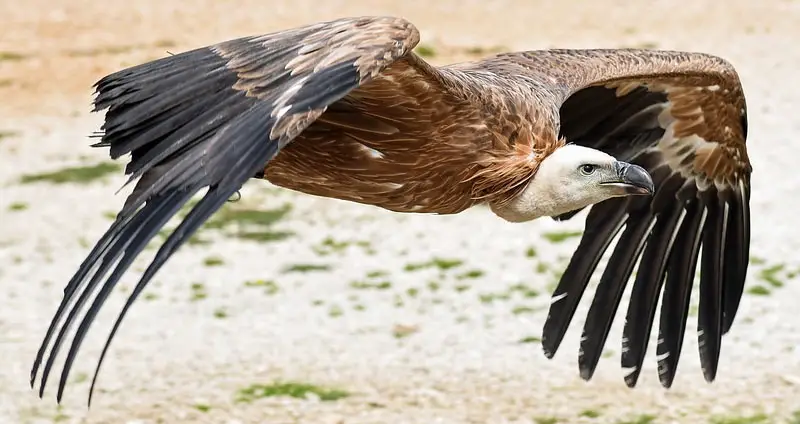
Various scavengers, such as vultures, aren’t predators of bears. However, they’re more than willing to eat a bear if the opportunity is presented to them.
As many hunters prefer fresh meat, scavengers are the primary eaters of bears that have died alone of natural causes. They may also track a wounded bear and feast when it passes.
The exact type of scavenger that eats a bear depends on the region that the bear is in.
6. Bears
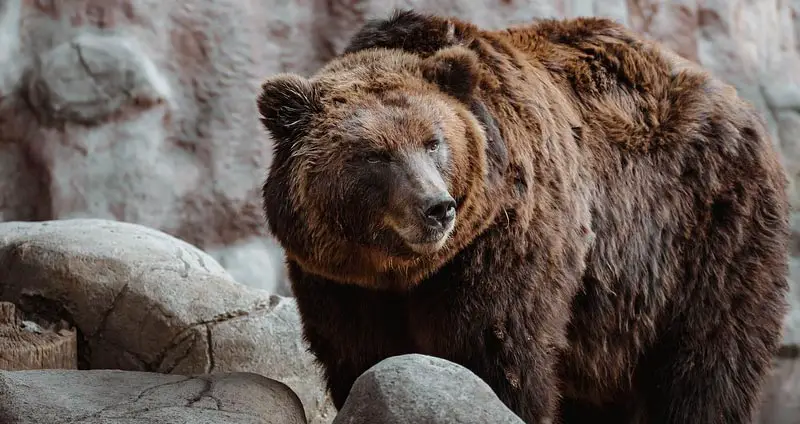
Bears are, believe it or not, one of the primary predators of bears — tied with or more-so than humans. This bear vs bear violence happens for two reasons.
First of all, cubs are the primary focus of other bears. They’re small and vulnerable aside from their protective parent, making them fairly accessible.
Male bears have been known to eat bear cubs that aren’t theirs. Additionally, an adult bear may eat their cubs if food is scarce and they’re nearing death. This is common among grizzle bears and polar bears.
The second circumstance is when adult bears of different species fight each other.
Grizzly bears, weighing 600 lbs on average, sometimes kill and eat black bears, which rarely weigh over 400 lbs. Black and grizzly bears have the most overlap in their habitats, so this is the most common rivalry.
However, this behavior can be observed in any bears if they come across each other.
How Do Bears Defend Themselves?
Bears are textbook apex predators. They have almost no predators and basically go about their day unrivaled. How does this happen, though?
Massive size isn’t enough to keep these bears safe. What are all of the factors that make them so safe in the wild?
Mass
First, an extremely important factor — bears are absolutely massive. A lot of the time, a bear will be the largest animal around for miles, making them intimidating and unapproachable.
Below we’ve included a chart of the average weight of the different types of bears. We’ve also written a comprehensive post on bear weight.
Type of Bear |
Avg. Weight of Male | Avg. Weight of Female |
| Sun Bear | 95 pounds (43 kg) | 85 pounds (39 kg) |
| Sloth Bear | 240 pounds (110 kg) | 165 pounds (75 kg) |
| Panda Bear | 250 pounds (113 kg) | 220 pounds (100 kg) |
| Asiatic Black Bear | 285 pounds (129 kg) | 180 pounds (82 kg) |
| Andean Bear | 330 pounds (150 kg) | 130 pounds (59 kg) |
| American Black Bear | 340 pounds (154 kg) | 230 pounds (104 kg) |
| Brown Bear | 480 pounds (218 kg) | 335 pounds (152 kg) |
| Grizzly Bear | 600 pounds (272 kg) | 345 pounds (155 kg) |
| Kodiak Bear | 1000 pounds (454 kg) | 550 pounds (249 kg) |
| Polar Bear | 1100 pounds (500 kg) | 440 pounds (200 kg) |
Physical Strengths
Bears are not only large, but they have the weapons to back it up. There are two primary weapons that bears have: claws and teeth.
A grizzly bear’s front claws can be as long as 4 inches, which is about the length of a human finger. This length, combined with the speed that a bear can swipe with, can have devastating results.
Additionally, bears have large teeth paired with an extremely strong jaw that can tear about predators and prey with ease.
Many animals are able to recognize that they can’t compete with these strengths.
Aggression
Aside from physical benefits, bears also have personalities that don’t allow them to get bossed around by other animals.
When angry or threatened, bears will loudly growl, pound their paws on the ground, and then quickly charge whatever is bothering them.
They make it known very quickly that they aren’t a force to be reckoned with, and it works almost every time.

